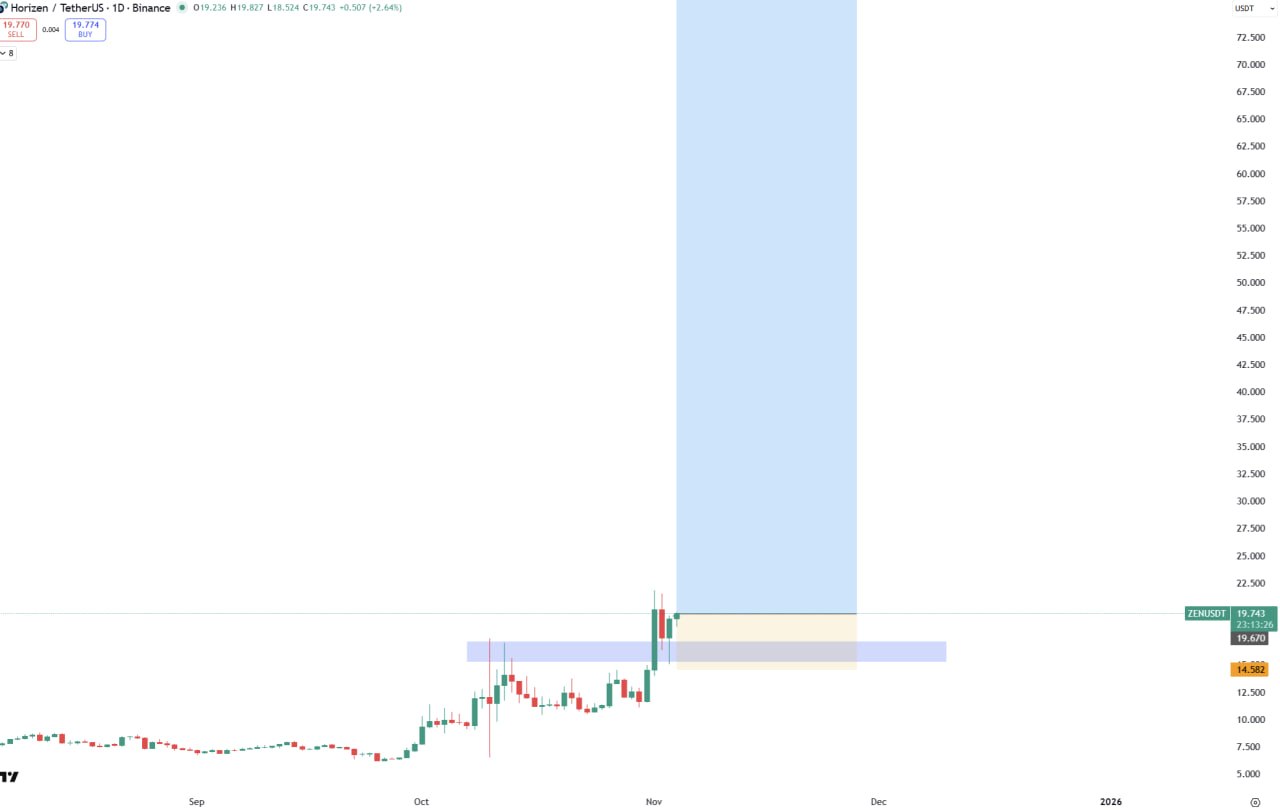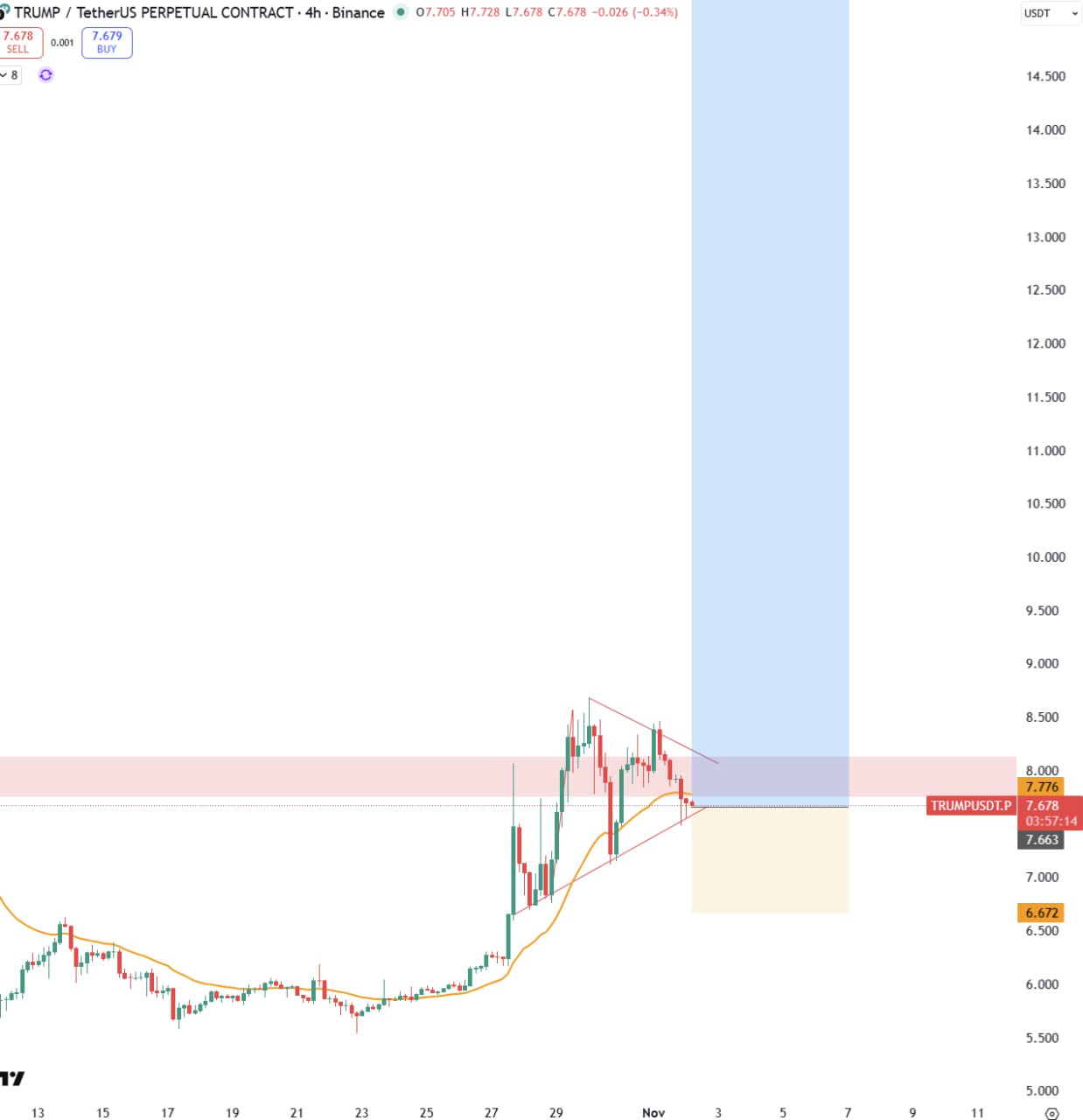ROSE/USDT.P — Long
2025-11-01 22:25
Long ROSE at 0.01788 with targets 0.0181, 0.185, 0.190; invalidation at 0.01426.

If the TradingView symbol is unavailable, use the annotated image as reference for target zones & invalidation.
ROSE/USDT.P Long Trade Signal — November 1, 2025
This campaign frames a long in ROSE around 0.01788, with a conservative first take-profit at 0.0181 and far upper targets at 0.185 and 0.190, protected by a hard stop at 0.01426. The target ladder is intentionally asymmetric: the first objective is a pragmatic pay-point inside nearby supply, while the latter marks a rare, volatility-regime shift where air pockets above reclaimed structures can produce outsized extensions. We do not expect the tail outcome; we design to participate if it appears.
Market Context
In the current cycle, L1/L2 rotations are common: capital migrates from headline majors into under-owned networks and back again. As attention swings, names like ROSE—recognizable but often overlooked—can shift from lethargic to lively when liquidity coalesces. The broader environment is constructive but selective: breadth improves on some days, narrows on others, and many breakouts fail if they are not accompanied by spot demand. That underlines our approach: respect levels, prefer retests to chases, and accept that most days are ‘base hits,’ not home runs.
On derivatives venues, ROSE’s order book is neither deep nor fragile; it sits in the middle. That means you can usually work limits near levels, but if you chase several ticks beyond, slippage escalates quickly. Funding has stayed mostly balanced during recent upticks—a good sign. If funding spikes into resistance, patience typically pays more than bravado.
Macro crosscurrents matter too. Into central-bank weeks or major U.S.–China headlines, risk appetite can swing violently. Our plan is built to withstand a bout of noise: tight first target to de-risk, hard invalidation below the base, and no averaging below the stop.
Technical Analysis
Structure: On the 4H, ROSE has compressed between ~0.0165 and ~0.0182. Buyers have begun to defend higher lows, and the mid-range (around 0.0176–0.0179) has started to act as a pivot. A controlled entry at 0.01788 puts you close to the shelf, allowing a short distance to invalidation and a straightforward first objective at 0.0181. Above that, the chart features a wide vacuum zone stemming from prior rapid sells; if price accepts beyond 0.020–0.022 on volume and breadth expands, larger pockets open up. That is where the tail targets—0.185 and 0.190—become relevant not as predictions but as pre-planned exits for a runner if the regime shifts decisively.
- Trend: Micro trend turning up on 1H/4H; daily still sideways but coiling.
- Momentum: Momentum indicators show basing; more important is price behavior at shelves: quick buybacks of dips and closes above reclaimed supply.
- Volume: Expands on pushes, fades on pullbacks—constructive. Watch for a volume surge if 0.0182–0.0190 breaks.
- Anchored VWAP: aVWAP from the most recent swing low sits under price; retests of that aVWAP have found buyers.
- Liquidity: Adequate in active sessions; decays rapidly in off-hours. Expect slippage if you execute at market during thin periods.
Key Levels
- Entry: 0.01788 (tolerance: 0.0178–0.01795)
- Targets: 0.0181 → 0.185 → 0.190
- Stoploss: 0.01426 (below base; breach invalidates the idea)
- Support: 0.0175–0.0176 (pivot), 0.0168–0.0170 (secondary), 0.0152–0.0155 (deep support)
- Resistance: 0.0181–0.0183 (immediate), 0.020–0.022 (value-area high), then vacuum zones higher if regime changes.
Execution Map
- Entry discipline: Build the position on a dip that respects the 0.0176–0.0179 pivot with a 1H close back above 0.0178–0.0179. Avoid initiating into the first attempt through 0.0182.
- TP1 and stop advancement: Take an initial 30% at 0.0181. If the breakout holds and price closes above 0.0182–0.0183 on rising volume, lift the stop to just beneath the most recent 1H higher low.
- For continuation: If breadth widens (peers bid, majors steady) and order-book offers thin into 0.020+, keep scaling with structure stops. Only a small runner aims at the tail targets; most of your PnL should be secured much earlier.
- When to stand down: If repeated failures occur at 0.0181–0.0183 with negative CVD and hot funding, reduce and wait; thin names often require several attempts before acceptance.
Failure Signatures
Two 1H closes below 0.0175 with expanding negative delta and rising open interest (fresh shorts) imply distribution—step aside. A daily close under 0.0168 resets the entire setup; no averaging below the stop at 0.01426.
Risk Management
Think of this as a two-phase trade. Phase one is a base hit to 0.0181 that pays risk quickly. Phase two is an optional continuation where the market must earn your patience by accepting above resistance and building higher lows. Size positions so the distance from entry to 0.01426 fits within your risk-per-trade budget. Set OCO orders to avoid hesitation during fast moves. After TP1, protect realized gains by advancing stops under structure rather than dragging to arbitrary breakeven points that liquidity hunters routinely sweep.
- No adds into resistance. If you add, do so on pullbacks that maintain higher-low structure and balanced funding.
- Respect max daily drawdown (e.g., −2R). Stop when reached; your edge is process, not adrenaline.
- Use limit orders at levels in thin tape; market orders widen your average cost.
- Leverage: Keep liquidation far below invalidation; never rely on exchange liquidation as a ‘stop.’
This is educational analysis, not investment advice. Perpetual futures and small-cap tokens are highly risky and can move through stops during gaps. Manage size and respect invalidation.








